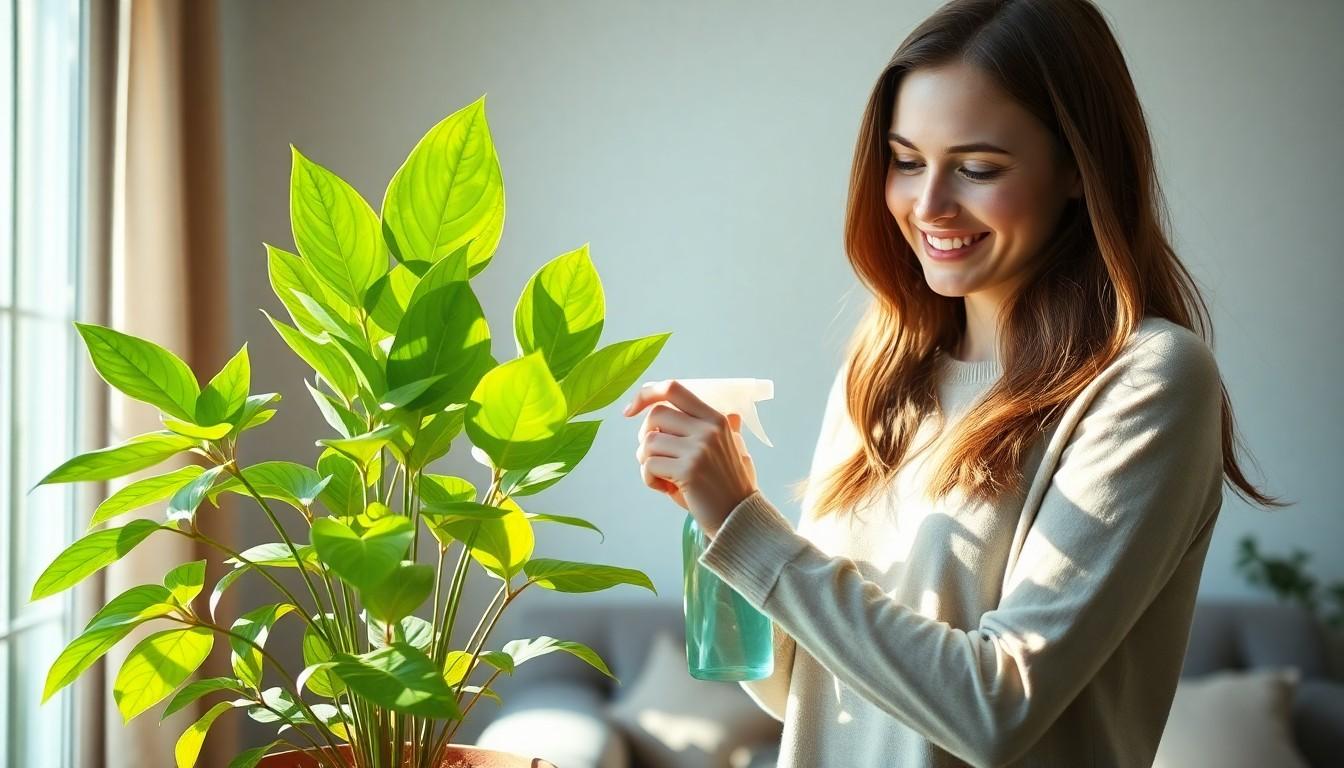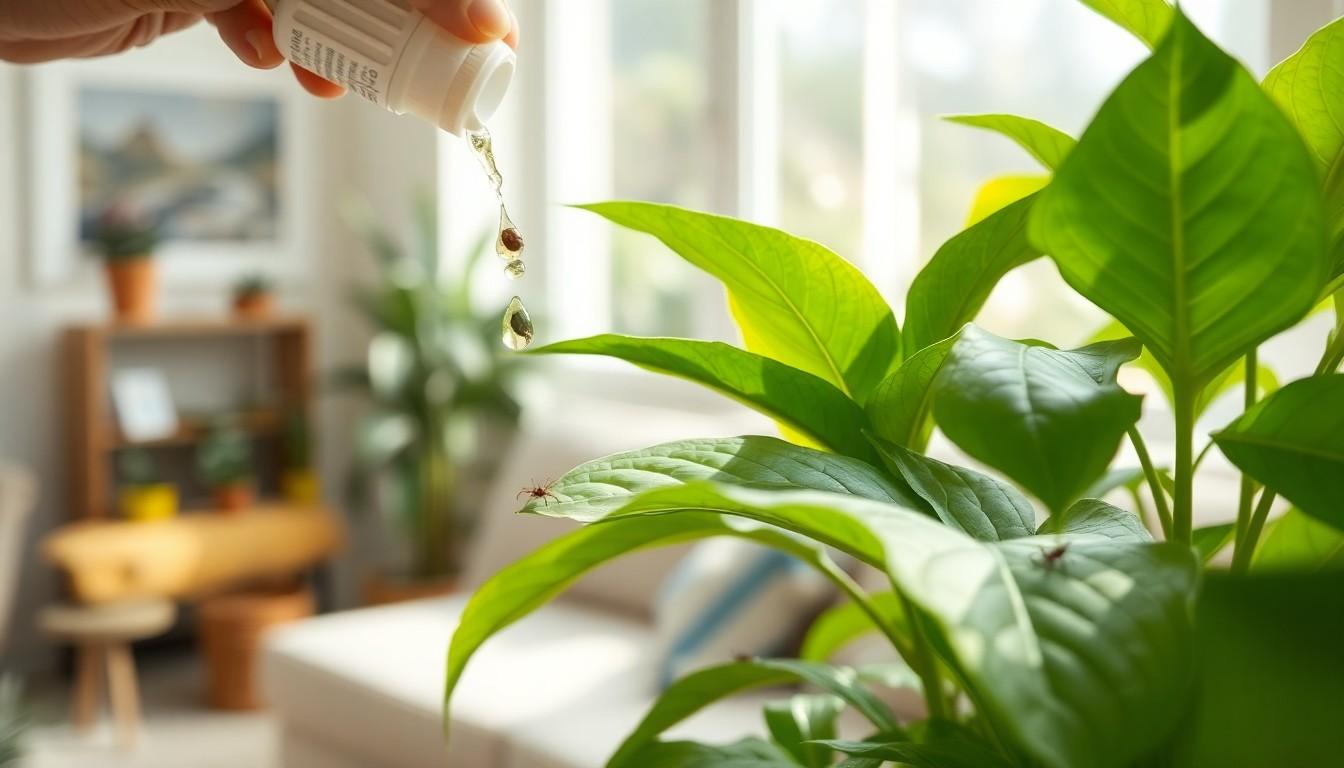Phone:
(701)814-6992
Physical address:
6296 Donnelly Plaza
Ratkeville, Bahamas.

Indoor plants bring life and joy to any space, but when spider mites crash the party, it’s a whole different story. These tiny pests can turn vibrant greens into sad, droopy leaves faster than you can say “plant parent.” But fear not! There’s no need to reach for harsh chemicals that could make your home feel more like a science experiment than a sanctuary.
Spider mites pose a significant threat to indoor plants. These tiny pests multiply rapidly, often leading to serious damage if not addressed promptly.
Spider mites belong to the Tetranychidae family and are arachnids, not insects. Adults measure about 0.4 mm in size, making them difficult to see without magnification. Colors vary from green to red or yellow, depending on the species. They thrive in warm and dry conditions, making indoor environments ideal for reproduction. Spider mites use their specialized mouthparts to pierce plant cells and extract nutrients, resulting in plant damage.
Signs of spider mite infestation become evident when plants display specific symptoms. Yellowing leaves often indicate feeding damage from these pests. Tiny webbing may appear on the undersides of leaves, resembling silk threads. Leaf drop or wilting can also signal an underlying issue. Small black specks may accumulate on leaves, representing mite feces. Spotting these signs early helps in taking quick action to protect the plants from further harm.

Natural remedies effectively combat spider mites without harsh chemicals. These solutions often promote healthier indoor plants and a harmonious living space.
Neem oil serves as a potent option against spider mites. Derived from the seeds of the neem tree, this oil disrupts the life cycle of these pests. It works by suffocating them and interfering with their reproduction. Applying neem oil diluted with water offers both prevention and treatment. Frequent applications every 7 to 14 days significantly enhance results.
Insecticidal soap acts as a simple yet effective remedy against spider mites. Made from natural plant oils and fats, it’s safe for indoor plants. Direct contact with this soap physically suffocates spider mites upon application. For optimal effectiveness, applying it to the undersides of leaves targets the pests directly. Frequent treatments every 5 to 7 days yield favorable outcomes.
Essential oils provide a fragrant solution for managing spider mite infestations. Oils like rosemary, peppermint, or citrus deter these pests naturally. Mixing a few drops of essential oil with water creates a spray that disrupts spider mites’ activity. Frequent application every 3 to 7 days yields better success. These oils add pleasant scents and serve as companions for plant health.
Effective prevention methods can protect indoor plants from spider mites. Focusing on humidity levels plays a critical role.
High humidity levels help deter spider mites, which thrive in dry conditions. Aim for humidity levels above 50% to create an unfavorable environment for these pests. Regular misting of plants with water provides moisture, or use a humidifier to maintain consistent humidity. Grouping plants also promotes a microclimate with higher humidity, helping to reduce the likelihood of infestation. Increasing humidity not only benefits spider mite prevention but also supports overall plant health.
Frequent inspections of indoor plants enable early detection of spider mites. Check the undersides of leaves and other hiding spots at least once a week. Look for tell-tale signs like webbing and yellowing leaves. Catching these pests early significantly reduces damage and the need for extensive treatments. Keep a close eye on new plants too, as they may introduce spider mites to an otherwise healthy environment. Diligent monitoring instills a proactive approach to plant care, enhancing resilience against pest problems.
Applying natural remedies effectively ensures success in eliminating spider mites from indoor plants. Understanding the right frequency and timing for treatments enhances pest control efforts.
Applying treatments regularly is crucial for managing spider mite infestations. Neem oil should be applied every 7 to 14 days; this frequency allows the solution to suffocate pests and disrupt their life cycle. Insecticidal soap requires applications every 5 to 7 days; frequent contact suffocates the mites on the leaves. Essential oil mixtures can be sprayed every 3 to 7 days; this regular application helps maintain repellent properties. Staying consistent with these intervals optimizes the effectiveness of each remedy, giving plants a better chance at recovery.
Timing also plays a significant role in application. Early morning is ideal for treating indoor plants; cooler temperatures and lower sunlight reduce the risk of leaf burn. Late afternoon can work too; however, ensure that treatments dry before nightfall to prevent mold growth on damp foliage. Avoid applying during peak sunlight hours; direct exposure could diminish the effectiveness of products. Prioritizing application time enhances both efficacy and plant health, making it easier to control spider mite populations.
Maintaining healthy indoor plants free from spider mites is achievable through natural methods. By utilizing remedies like neem oil and insecticidal soap, plant owners can effectively combat these pests without harsh chemicals. Regular inspections and attention to humidity levels are crucial for early detection and prevention.
Implementing these strategies not only protects plants but also fosters a vibrant home environment. With consistent care and proactive measures, indoor plants can thrive, creating a joyful atmosphere that enhances any living space.